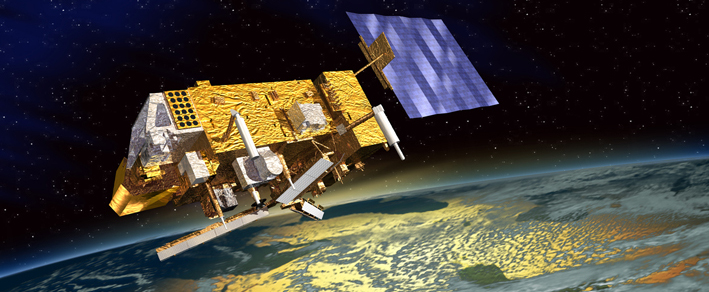The Infrared Atmospheric Sounding Interferometer (IASI) Series
IASI Instruments, Operational Period and Satellite Platforms
The Infrared Atmospheric Sounding Interferometer (IASI) is a Fourier Transform Spectrometer based on the Michelson Interferometer, associated with an Integrated Imaging System (IIS). It is carried around the earth in a heliosynchronous orbit by the MetOp satellites.
There are currenly IASI instruments aboard two MetOp satellites in orbit: MetOp-A, launched in 2006 and MetOp-B, launched in 2013. They are primarily used for weather forecasting, however the retrieval of trace gas concentrations can also be achieved.
IASI has a scan range of 48°20' symetrically on either side of the nadir direction. This gives a swath of about 2200 km. Next, it covers the region between 645 to 2769 cm-1 in term of spectral range, divided into three bands. First, from 645 to 1210 cm-1, the second, from 1210 to 2000 cm-1 and the third, from 2000 to 2760 -1. Further, its spectral resolution is 0.5 cm -1, apodized.
IASI Principles and Sensing Charateristics
The Infrared Atmospheric Sounding Interferometer (IASI) is a nadir-viewing instrument launched on the MetOpA satellite in October 2006, with
a second instrument on the MetOpB satellite launched September 2012.
These instruments are primarily intended for use by meteorological services, providing profiles of tropospheric temperature and water vapour for numerical weather prediction.
How EODG Uses IASI
Data from the IASI instrument is used to investigate a wide range of topics concerning the atmosphere. For example, one of the main focuses of the group is research of volcanic emissions. IASI data can be used to analyse the gases and ash injected into the atmosphere by volcanic eruptions - in particular, we carry out retrievals to obtain values for the ash optical depth and particle size, the plume height, the total ash mass, and the amount of gases (specifically SO2).
We also perform retrievals of temperature and humidity levels for use in weather forecasting, as well as estimations of the trace gases present in the atmosphere.
Given that IASI measures radiance, we must indirectly calculate the quantities mentioned above using inverse methods. In Oxford, we use optimal estimation, which is a special case of solving inverse problems, where constraints (an a priori estimate) are applied to a least squares fit (the more general method). The a priori is based on meteorological data from different sources, such as ECMWF. Thus, the method aims to minimise two weighted differences: between the simulated spectra and measured spectra and the a priori estimate and the computed state vector.
Publications
External Links









